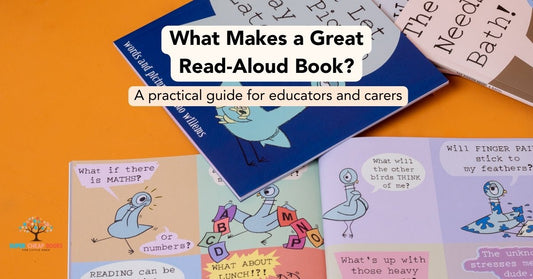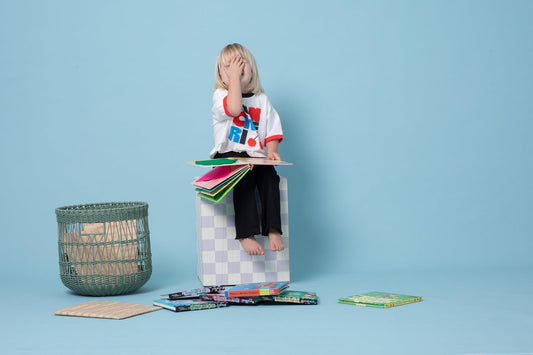
Picture books are often seen as simple stories for young children, but their impact goes far beyond colourful illustrations and playful rhymes. In fact, picture books can teach important lessons about understanding and expressing emotions—not just for kids, but for adults, too. Emotional intelligence (EQ) is a skill we develop throughout our lives, and picture books provide an accessible, engaging way to start that journey early.
Through relatable characters and situations, these stories help children recognise and name their emotions, build empathy, and learn resilience. And who knows? Even grown-ups might find a meaningful takeaway or two. Here’s how some of our favourite books can help nurture emotional intelligence in children—and remind us that we’re never too old to learn from a great story.
1. Understanding and Naming Emotions
One of the first steps in developing emotional intelligence is learning to identify and name feelings. Books like All About Feelings offer a gentle, engaging way to introduce a wide range of emotions to young readers. This collection uses relatable scenarios and vibrant illustrations to show kids what it’s like to feel happy, sad, angry, or scared—and that all feelings are okay. As you read together, try asking, “When have you felt this way?” to encourage self-reflection and discussion.
Tip: Encourage your child to use the language they learn from these books to talk about their feelings. For example, “I feel frustrated because…” helps them practice expressing emotions constructively.
2. Building Empathy
Empathy is a core component of emotional intelligence. How Could We Be Kind? is a beautiful story that encourages children to think about the impact of their actions on others. It’s filled with simple, real-life examples of kindness and compassion, inspiring kids to consider how they can make the world a better place. After reading, you can discuss, “How do you think the character felt when someone was kind to them?” This sparks conversations about understanding and caring for others’ feelings.
Activity Idea: Challenge your child to perform a small act of kindness, like making a card for a friend or helping someone at home. Then, talk about how it made them feel to be kind.
3. Learning Resilience
Handling setbacks and challenges is an important life skill, and picture books can provide a safe space to explore these concepts. Last Place Lin tells the story of Lin, who doesn’t always win but discovers the value of perseverance and finding joy in the process. This story is a wonderful conversation starter about resilience, showing that it’s okay to feel disappointed but important to keep trying.
Discussion Prompt: Ask your child, “What would you do if you were in Lin’s shoes?” This helps them think about how to face challenges and bounce back from difficulties.
4. Celebrating Everyday Happiness
Teaching children to notice and appreciate the small joys in life can help them develop a positive outlook. My First Book of Happiness is perfect for young readers, celebrating simple moments that bring happiness, like playing with friends or enjoying a sunny day. It’s a gentle reminder that happiness doesn’t have to come from big events; it can be found in everyday experiences.
Mindfulness Tip: After reading, encourage your child to share one thing that made them happy that day. It’s a great way to end the day on a positive note.
Picture books are more than just stories; they’re powerful tools for teaching emotional intelligence. Books like All About Feelings, How Could We Be Kind?, and Last Place Lin give children the language and examples they need to understand their emotions and the emotions of others. By reading and discussing these stories, we can help raise emotionally aware, kind, and resilient children.
Next time you’re picking out a book, remember the impact these stories can have—both in the moment and as lifelong lessons.




